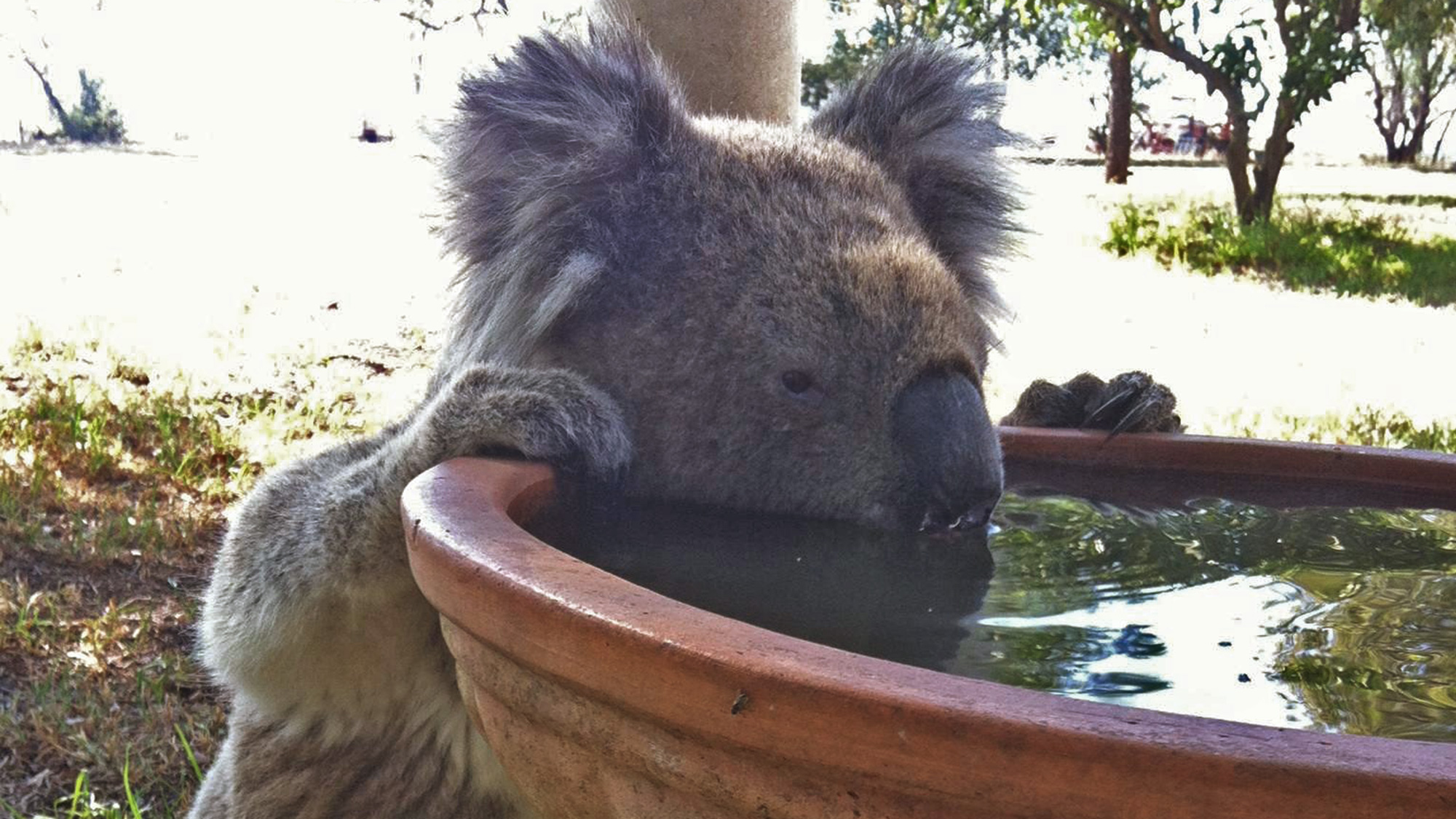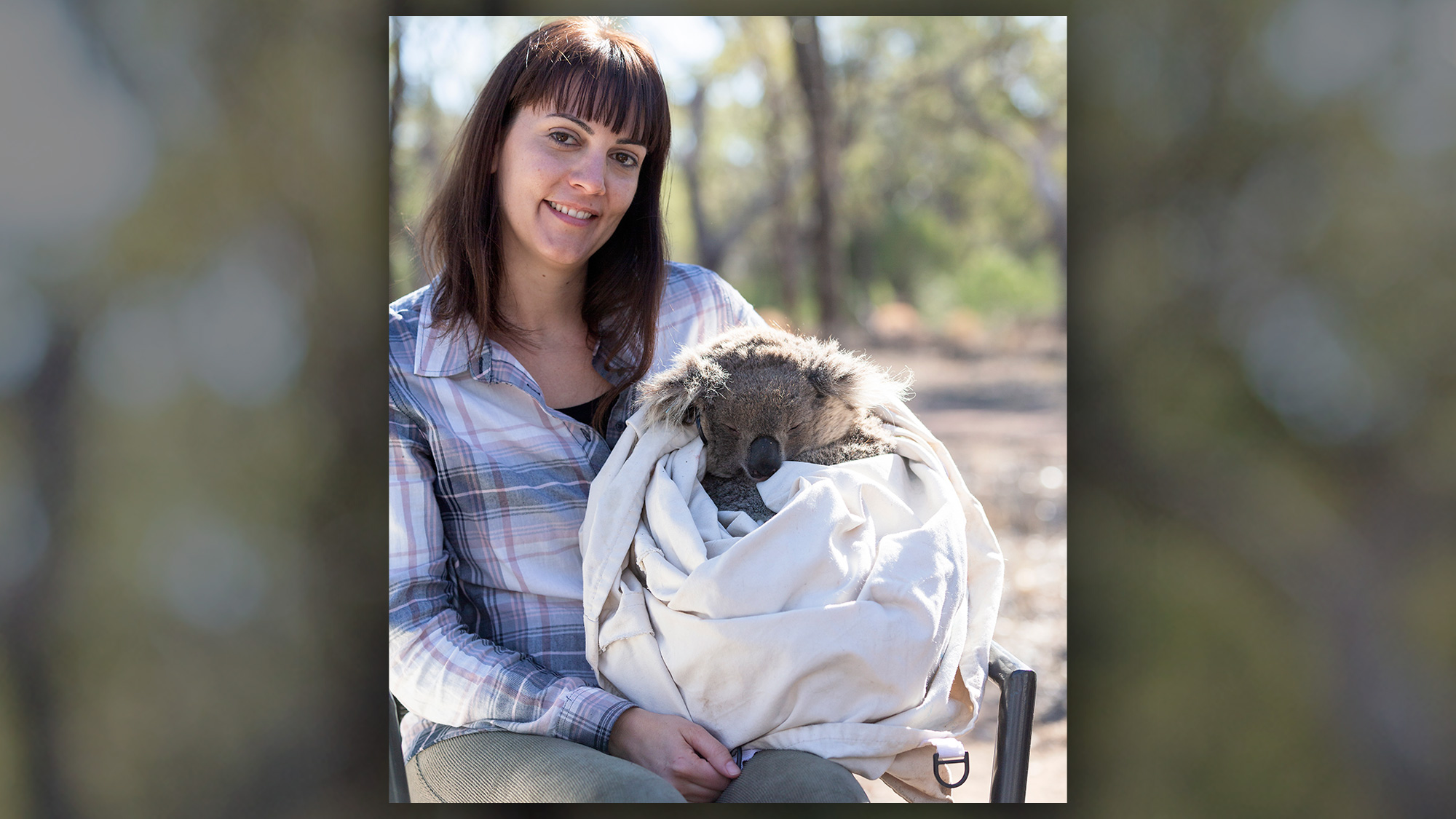A Koala Walks Into a Bar ... Here's Why Scientists Think That's a Good Idea
In other words, koalas need their own special "water bars," especially as human-made climate change increases heat waves and droughts Down Under.
"The fact that koalas do not need to drink water at all and that the name 'koala' in aboriginal language actually means 'no drink' is a long-lived myth," said study lead researcher Valentina Mella, a postdoctoral research associate at the School of Environmental Sciences at the University of Sydney. [Marsupial Photos: A Pouchful of Cute]
While koalas do get the majority of their water from the leaves they eat, "this is not always enough," Mella told Live Science in an email. For starters, climate change is reducing the water content in those leaves. What's more, these furry mammals can't just eat more leaves to quench their thirst. That's because increased carbon dioxide emissions linked to climate change increase the levels of toxins — phenolics and tannins — in eucalyptus leaves, she said. Koalas can handle a certain level of these toxins, but they can't digest an unlimited amount.
Koalas that don't get enough water don't always make it. In 2009, a heat wave killed an estimated quarter of the koala population in Gunnedah, a town in New South Wales. Moreover, koala numbers on Australia's east coast have plummeted because of chlamydia, attacks from feral animals, habitat loss from deforestation and vehicle collisions. Koala numbers in Queensland and New South Wales have dropped from 326,400 in 1990 to 188,000 in 2010, a drop of 42%, according to the Australian Department of the Environment and Energy.

To help the marsupials, Mella and her colleagues set up water stations, a type of "koala taproom" for wild animals. In the first year, the team recorded 605 koala visits to 10 pairs of water stations, with 401 of the visits leading to koalas taking a long, refreshing drink.
The total number of visits and drinking time doubled during the summer compared with the other seasons, indicating that koalas need an extra water source when it's hot and dry, likely to assist with thermoregulation, she said.
Artificial watering holes could also help other parched wildlife, including gliders and possums in Australia and sloths, lemurs and monkeys on other continents, the researchers added.
Sign up for the Live Science daily newsletter now
Get the world’s most fascinating discoveries delivered straight to your inbox.

The findings are already having a positive impact, with local governments in Australia setting up drinking stations for koalas. "Our water stations are now all set in trees, to limit the access to arboreal animals and exclude terrestrial predators," Mella said.
The study was published online today (June 5) in the journal PLOS ONE.
- In Photos: Travel Australia's Great Ocean Road
- Photos: Dinosaur Tracks Reveal Australia's 'Jurassic Park'
- Australia's Struggling Marsupial: Photos of the Tasmanian Devil
Originally published on Live Science.

Laura is the archaeology and Life's Little Mysteries editor at Live Science. She also reports on general science, including paleontology. Her work has appeared in The New York Times, Scholastic, Popular Science and Spectrum, a site on autism research. She has won multiple awards from the Society of Professional Journalists and the Washington Newspaper Publishers Association for her reporting at a weekly newspaper near Seattle. Laura holds a bachelor's degree in English literature and psychology from Washington University in St. Louis and a master's degree in science writing from NYU.









